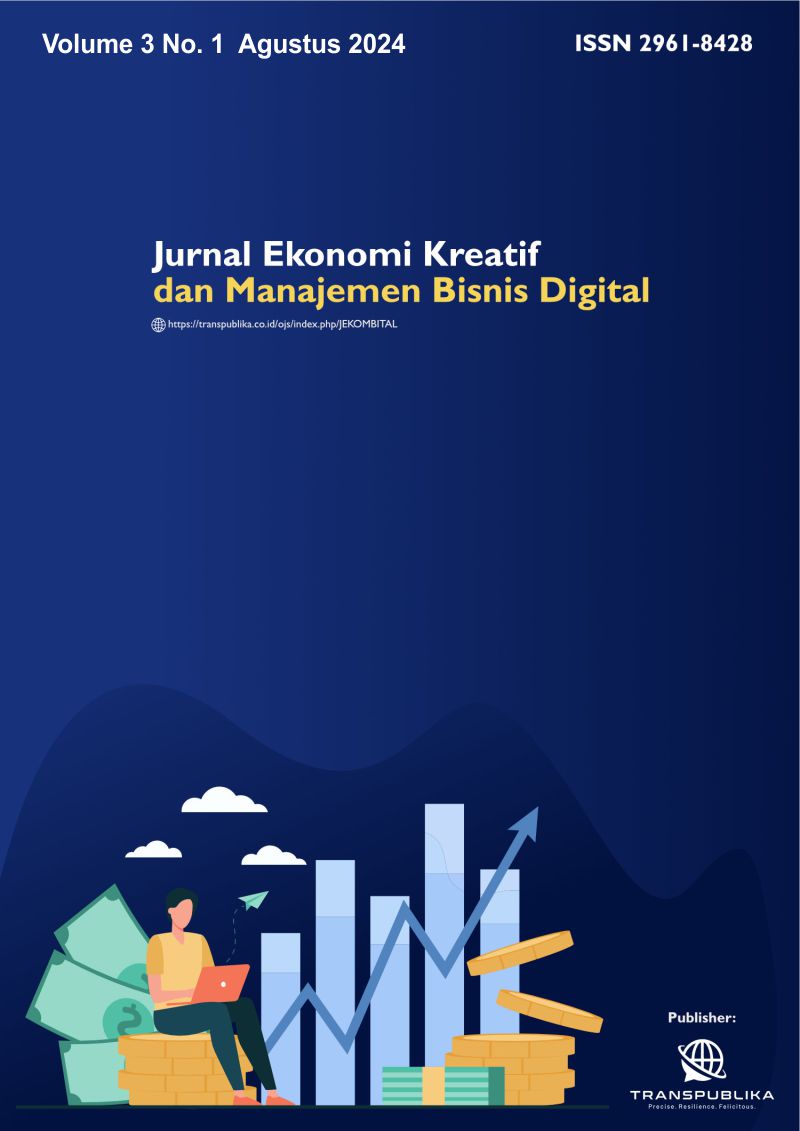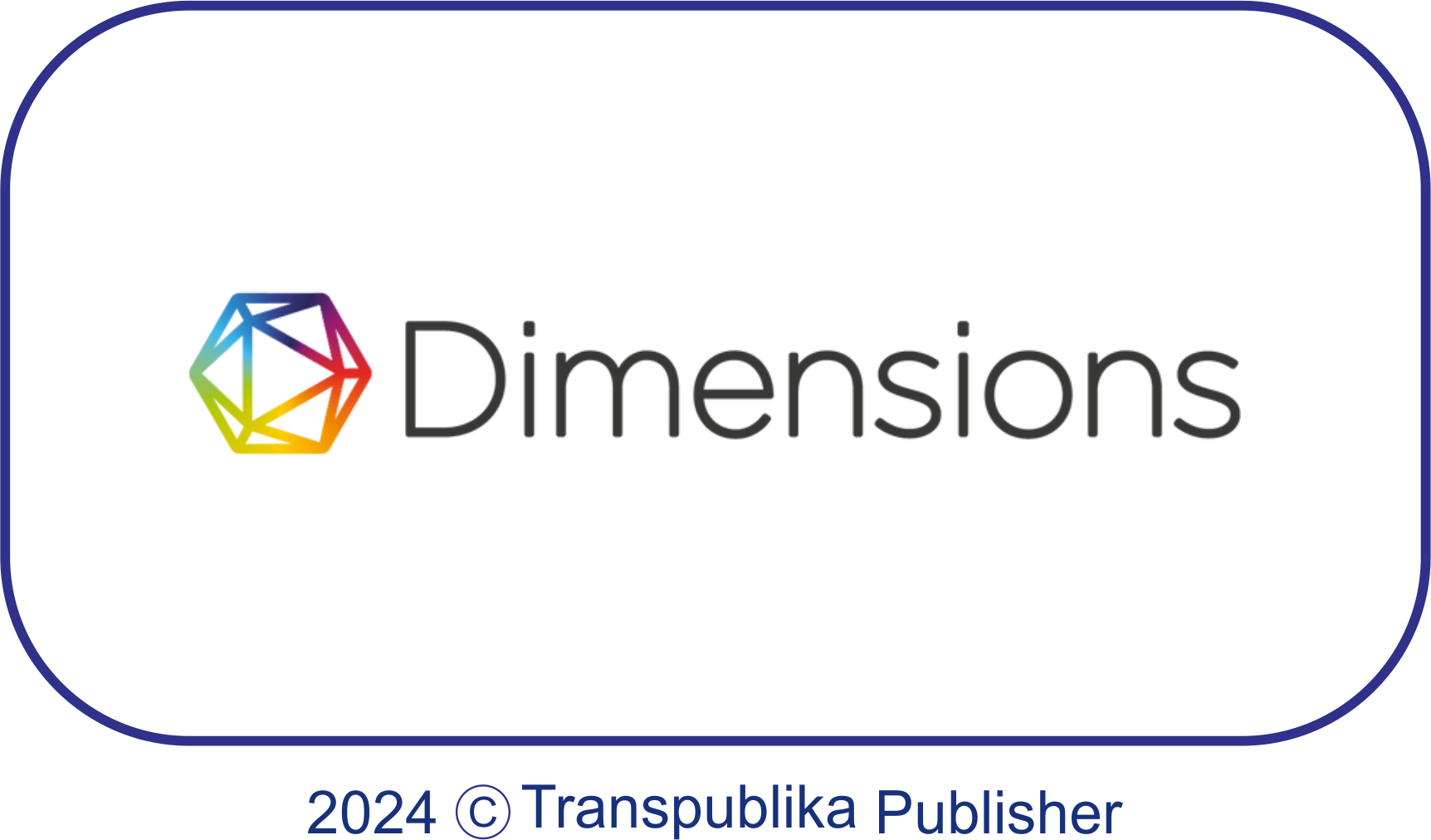INFORMASI, INTERAKTIFITAS, DAN RELEVANSI INSTAGRAM REELS ADS DAN DAMPAKNYA TERHADAP ADVERTISEMENT PERFORMANCE EXPECTANCY
Abstract
The primary goal of this research was to explore the impact of information, interactivity, and relevance in Instagram Reels Ads, specifically focusing on their influence on ad performance expectations within the context of FitaminCylingCulture. The study takes a quantitative approach within the positivism paradigm. The target population consists of active users of social media who are followers of the Instagram account @FitaminCylingCulture. A total of 100 respondents were selected for the study based on the Lemeshow formula with a 10% margin of error. The sampling method employed was purposive, involving the selection of active followers of FitaminCyclingCulture who are also customers. Data analysis was conducted using partial least squares (PLS), which included testing the measurement model for validity and reliability, as well as assessing the statistical significance of the hypothesized relationships through structural model testing. The majority of respondents were located in the Jabodetabek region (94.2%), with the largest age group being 20-24 years old (63.5%). It was found that these three factors had a significant positive impact on advertisement performance expectations.
References
Abel, M. (1999). Fargo: The violent production of the masochistic contract as a cinematic concept. Critical Studies in Media Communication, 16(3), 308–328. https://doi.org/10.1080/15295039909367098
Ahn, T., Ryu, S., & Han, I. (2004). The impact of the online and offline features on the user acceptance of Internet shopping malls. Electronic Commerce Research and Applications, 3(4), 405–420. https://doi.org/10.1016/j.elerap.2004.05.001
Alalwan, A. A., Rana, N. P., Dwivedi, Y. K., & Algharabat, R. (2017). Social media in marketing: A review and analysis of the existing literature. Telematics and Informatics, 34(7), 1177–1190. https://doi.org/10.1016/j.tele.2017.05.008
Armayani, R. R., Chintiya Tambunan, L., Siregar, R. M., Lubis, N. R., & Azahra, A. (2021). Analisis Peran Media Sosial Instagram dalam Meningkatkan Penjualan Online. Jurnal Pendidikan Tambusai, 5, 8920–8928.
Bain, P. (2021). Marketers discuss the most overlooked industry trends of 2021. Marketing Brew.
Barbara Suha, & Kurnia. (2021). Social Media Activity dan Customer Experience dalam Membentuk Relationship Quality. Ganaya : Jurnal Ilmu Sosial Dan Humaniora, 4(2), 480–490. https://doi.org/10.37329/ganaya.v4i2.1346
Barreda, A. A., Bilgihan, A., Nusair, K., & Okumus, F. (2016). Online branding: Development of hotel branding through interactivity theory. Tourism Management, 57, 180–192. https://doi.org/10.1016/j.tourman.2016.06.007
Boonlertvanich. (2019). Service quality, satisfaction, trust, and loyalty: the moderating role of main-bank and wealth status. International Journal of Bank Marketing, 37(1), 278–302. https://doi.org/10.1108/IJBM-02-2018-0021
Chang, Y. T., Yu, H., & Lu, H. P. (2015). Persuasive messages, popularity cohesion, and message diffusion in social media marketing. Journal of Business Research, 68(4), 777–782. https://doi.org/10.1016/j.jbusres.2014.11.027
Chen, Y. H., Hsu, I. C., & Lin, C. C. (2010). Website attributes that increase consumer purchase intention: A conjoint analysis. Journal of Business Research, 63(9–10), 1007–1014. https://doi.org/10.1016/j.jbusres.2009.01.023
Drossos, D., & Giaglis, G. M. (2005). Factors that influence the effectiveness of mobile advertising: The case of SMS. Lecture Notes in Computer Science (Including Subseries Lecture Notes in Artificial Intelligence and Lecture Notes in Bioinformatics), 3746 LNCS, 278–285. https://doi.org/10.1007/11573036_26
Gardiola Fitri, Alysha, dan K. (2020). Penggunaan Dan Pemenuhan Kebutuhan Pemirsa Drama Serial Sebagai Upaya Mempertahankan Tayangan Program Televisi India di ANTV. Ganaya: Jurnal Ilmu Sosial Dan Humaniora, 3(2), 300–313.
Gutierrez, V. (2022). Social Media Advertising. Statista.
Hunt, H. K. (1977). Rotzoll, Kim, J. Haefner, C. Sandage. Advertising in Contemporary Society: Perspectives toward Understanding . Columbus: Grid, 1976 . Journal of Advertising, 6(3), 44–45. https://doi.org/10.1080/00913367.1977.10672709
Juditha, C. (2017). Memahami Struktur Jaringan Media Sosial Sebagai Cara Strategis Periklanan Di Era Ekonomi Digital. Journal Pekommas, 2(1), 99. https://doi.org/10.30818/jpkm.2017.2020110
Jung, J., Shim, S. W., Jin, H. S., & Khang, H. (2016). Factors affecting attitudes and behavioural intention towards social networking advertising: A case of facebook users in South Korea. International Journal of Advertising, 35(2), 248–265. https://doi.org/10.1080/02650487.2015.1014777
Kim, H., & Niehm, L. S. (2009). The Impact of Website Quality on Information Quality, Value, and Loyalty Intentions in Apparel Retailing. Journal of Interactive Marketing, 23(3), 221–233. https://doi.org/10.1016/j.intmar.2009.04.009
Kurniawati, D. (2013). Strategi pemasaran melalui media sosial dan minat beli mahasiswa. Jurnal Simbolika, 1(2), 193–198.
Kusuma, S. I., & Prasetio, A. (2016). Proses Public Relations Pt. Pos Indonesia Dalam Mempertahankan Citra Terkait Beredarnya Tabloid Obor Rakyat. EProceedings of Management, 3(2).
Laruan. (2021). 4 Keuntungan Instagram Reels Beserta Caranya. KreditPintar.
Lee, H. H., Fiore, A. M., & Kim, J. (2006). The role of the technology acceptance model in explaining effects of image interactivity technology on consumer responses. International Journal of Retail and Distribution Management, 34(8), 621–644. https://doi.org/10.1108/09590550610675949
Lee, J., & Hong, I. B. (2016). Predicting positive user responses to social media advertising: The roles of emotional appeal, informativeness, and creativity. International Journal of Information Management, 36(3), 360–373. https://doi.org/10.1016/j.ijinfomgt.2016.01.001
Lemeshow, S., Hosmer, D. W., Klar, J., & Lwanga, S. K. (1997). Sample size in health research. Yogyakarta: Universitas Gadjah Mada.
Liang, T. P., Chen, H. Y., Du, T., Turban, E., & Li, Y. (2012). Effect of personalization on the perceived usefulness of online customer services: A dual-core theory. Journal of Electronic Commerce Research, 13(4), 275–288.
Liu, L., Lee, M. K. O., Liu, R., & Chen, J. (2018). Trust transfer in social media brand communities: The role of consumer engagement. International Journal of Information Management, 41(28), 1–13. https://doi.org/10.1016/j.ijinfomgt.2018.02.006
Logan et al. (2015). 기사 (Article) 와 안내문 (Information) [. The Eletronic Library, 34(1), 1–5.
Mantok, S., Sekhon, H., Sahi, G. & Jones, P. (2019). Cronfa - Swansea University Open Access Repository. Journal of Small Business and Enterprise Development, 92–105.
McMillan, S. J., & Hwang, J. S. (2002). Measures of perceived interactivity: An exploration of the role of direction of communication, user control, and time in shaping perceptions of interactivity. Journal of Advertising, 31(3), 29–42. https://doi.org/10.1080/00913367.2002.10673674
Men, L. R., & Tsai, W. H. S. (2015). Infusing social media with humanity: Corporate character, public engagement, and relational outcomes. Public Relations Review, 41(3), 395–403. https://doi.org/10.1016/j.pubrev.2015.02.005
Oh, J., & Sundar, S. S. (2015). How does interactivity persuade? An experimental test of interactivity on cognitive absorption, elaboration, and attitudes. Journal of Communication, 65(2), 213–236. https://doi.org/10.1111/jcom.12147
Rana, N. P., Dwivedi, Y. K., Lal, B., Williams, M. D., & Clement, M. (2017). Citizens’ adoption of an electronic government system: towards a unified view. Information Systems Frontiers, 19(3), 549–568. https://doi.org/10.1007/s10796-015-9613-y
Rathore, A. K., Ilavarasan, P. V., & Dwivedi, Y. K. (2016). Social media content and product co-creation: an emerging paradigm. Journal of Enterprise Information Management, 29(1), 7–18. https://doi.org/10.1108/JEIM-06-2015-0047
Rayi, M. (2021). Algoritma Instagram Reels: Cara Kerja dan Tips Menyiasatinya. Meson Digital.
Reitz, A. (2012). Social media’s function in organizations: A functional analysis approach. Global Media Journal, 5(2), 41.
Shareef, M. A., Baabdullah, A., Dutta, S., Kumar, V., & Dwivedi, Y. K. (2018). Consumer adoption of mobile banking services: An empirical examination of factors according to adoption stages. Journal of Retailing and Consumer Services, 43(February), 54–67. https://doi.org/10.1016/j.jretconser.2018.03.003
Shareef, M. A., Mukerji, B., Dwivedi, Y. K., Rana, N. P., & Islam, R. (2019). Social media marketing: Comparative effect of advertisement sources. Journal of Retailing and Consumer Services, 46(September), 58–69. https://doi.org/10.1016/j.jretconser.2017.11.001
Steuer, J. (1992). Defining Virtual Reality: Dimensions Determining Telepresence. Journal of Communication, 42(4), 73–93. https://doi.org/10.1111/j.1460-2466.1992.tb00812.x
Taylor, D. G., Lewin, J. E., & Strutton, D. (2011). Friends, Fans, and Followers: Do Ads Work on Social Networks? Journal of Advertising Research, 51(1), 258–275. https://doi.org/10.2501/jar-51-1-258-275
Team, I. B. (2021). Introducing Instagram Reels Ads: Grow and Reach New Customers. Meta Fot Business.
Voorveld, H. A. M., Van Noort, G., & Duijn, M. (2013). Building brands with interactivity: The role of prior brand usage in the relation between perceived website interactivity and brand responses. Journal of Brand Management, 20(7), 608–622. https://doi.org/10.1057/bm.2013.3
Wang, H., Meng, Y., & Wang, W. (2013). The role of perceived interactivity in virtual communities: building trust and increasing stickiness. Connection Science, 25(1), 55–73. https://doi.org/10.1080/09540091.2013.824407
Wibowo, A., Chen, S. C., Wiangin, U., Ma, Y., & Ruangkanjanases, A. (2021). Customer behavior as an outcome of social media marketing: The role of social media marketing activity and customer experience. Sustainability (Switzerland), 13(1), 1–18. https://doi.org/10.3390/su13010189
Zhang, H., Lu, Y., Gupta, S., & Zhao, L. (2014). What motivates customers to participate in social commerce? The impact of technological environments and virtual customer experiences. Information & Management, 51. https://doi.org/10.1016/j.im.2014.07.005
Copyright (c) 2024 Muhammad Daffa Ramadhan, Kurnia Kurnia

This work is licensed under a Creative Commons Attribution 4.0 International License.










.png)




.png)
.png)











.jpg)
.png)


